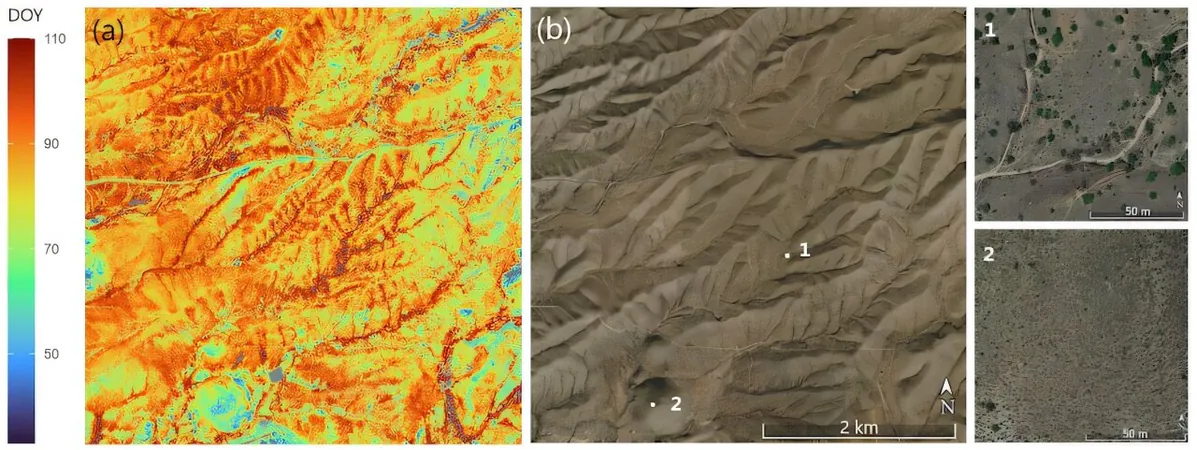
Revolutionizing Agriculture: How Satellite Data is Transforming Plant Growth Monitoring
2025-08-26
Author: Ming
Satellite Technology Meets Agriculture
Since 2014, Planet, a groundbreaking San Francisco-based company, has been changing the game in Earth observation with its fleet of miniature satellites, affectionately known as "Doves." Orbiting the planet every 90 minutes, these impressive devices capture detailed snapshots of our planet on a daily basis, providing insights with a remarkable three-meter accuracy.
Unlocking Secrets in the Western U.S.
At South Dakota State University's Geospatial Sciences Center of Excellence, researchers are harnessing the power of Planet's satellite data to unlock vital information about the Western United States. This region, characterized by a growing population and largely semi-arid climate, presents unique challenges for monitoring plant growth cycles, traditionally a notoriously difficult task due to sporadic rainfall and irregular vegetation patterns.
A Breakthrough Study
A recent study published in the ISPRS Journal of Photogrammetry and Remote Sensing highlights the groundbreaking success SDSU researchers have achieved using Planet's satellite technology. With this advanced data, they can accurately identify plant growth cycles, even in the face of the unpredictable climate of semi-arid regions. The study’s findings reveal that high-resolution satellite data can effectively differentiate between the growth patterns of a variety of plants.
Implications for Agriculture and Ecology
"With the increasing ecological importance of semi-arid ecosystems, understanding vegetation dynamics and how they respond to climate changes is essential," emphasizes Xiaoyang Zhang, a distinguished professor and co-director at the center. This newfound ability to detect plant growth accurately can revolutionize agricultural practices by optimizing planting and harvesting times. Additionally, it offers crucial insights for drought response strategies and enhances forage management for livestock, ultimately fostering better resource management and production security.
A Promising Future Ahead
Postdoctoral research associate Yuxia Liu asserts that the results underscore the valuable potential of Planet's data to study plant-specific growth cycles with both high temporal and spatial resolution in semi-arid ecosystems. Through meticulous validation against ground-level imagery gathered at 15 locations across the Western U.S., the researchers are opening new avenues for agricultural innovation.
The fusion of satellite technology and agriculture is not just a futuristic vision—it’s happening now, promising to enhance food security and environmental understanding in some of the most challenging landscapes.

 Brasil (PT)
Brasil (PT)
 Canada (EN)
Canada (EN)
 Chile (ES)
Chile (ES)
 Česko (CS)
Česko (CS)
 대한민국 (KO)
대한민국 (KO)
 España (ES)
España (ES)
 France (FR)
France (FR)
 Hong Kong (EN)
Hong Kong (EN)
 Italia (IT)
Italia (IT)
 日本 (JA)
日本 (JA)
 Magyarország (HU)
Magyarország (HU)
 Norge (NO)
Norge (NO)
 Polska (PL)
Polska (PL)
 Schweiz (DE)
Schweiz (DE)
 Singapore (EN)
Singapore (EN)
 Sverige (SV)
Sverige (SV)
 Suomi (FI)
Suomi (FI)
 Türkiye (TR)
Türkiye (TR)
 الإمارات العربية المتحدة (AR)
الإمارات العربية المتحدة (AR)